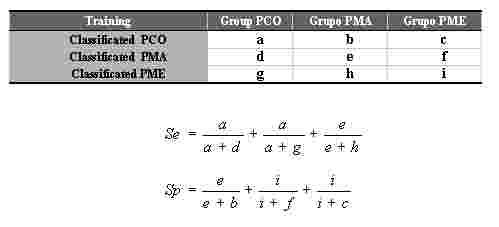Poster | 6th Internet World Congress for Biomedical Sciences |
Antonio J. Serrano López(1), Gustavo Camps i Valls(2), EMILIO SORIA OLIVAS(3), NICOLÁS VICTOR JIMÉNEZ TORRÉS(4), José David Martín Guerrero(5), Jose Ramon Sepulveda Sanchis(6)
(1)(6)Dpto. Electrónica. Universidad de Valencia - Burjasot. Spain
(2)Universitat de València - Burjassot, Valencia. Spain
(3)DPTO INGENIERÍA ELECTRONICA. FACULTAD DE FISICAS - BURJASSOT/VALENCIA. Spain
(4)DPTO FARMACIA Y TECNOLOGÍA FARMACEÚTICA. FACULTAD DE FARMACIA - BURJASSOT/VALENCIA. Spain
(5)G.P.D.S. Departament d´Enginyeria Electrònica. Universitat de València - Burjassot. Spain
|
|
|
|
|
|
|
[Pharmacology] |
[Health Informatics] |
[Oncology] |
Cancer was already known in antiquity. It is actually a group of related diseases characterized by uncontrolled multiplication and disorganized growth of the affected cells; it may arise in any of the body´s tissues.(1)
Successful treatment of cancer requires the complete removal or destruction of all cancerous tissue. Chemotherapy, treatment with drugs and hormones, has proved helpful in some forms of cancer.
Because cancer cells are similar to normal human cells, the anticancer agents are generally toxic to them and can cause numerous side effects, some of which are life threatening.
Emesis (vomits) after chemotherapy administration is one of the drawbacks in the treatment against the cancer. A control of this effect would increase the effectiveness of the healing process, therefore an estimation of patient´s reaction to treatment and antiemetic drugs is mandatory. Complexity rests in the difficulty to establish the complicated relationships between drugs and organism.
The present work exposes the development and validation of a model based on artificial neural networks (Multilayer Perceptron) which is able to predict the post-chemotherapy emesis protection level .
To predict a subjective behavior as emesis is a very difficult task. To simplify the problem the model has been approached using classification. The developed model classifies patients according following criterion, which is frequently used in medical environment:
The neural model is a full-connected Multilayer Perceptron with 22 input nodes. One hidden
layer with variable number of nodes, and three outputs nodes. (2)
The input layer nodes correspond to the most common risk factors of seven protocols of chemotherapy administrated at the university hospital Dr. Peset of Valencia. Seven of them are patient´s characteristics, other three are doses of antiemetics and the other twelve are doses of cytostatics. There is one output node for each possible answer to the treatment.
The classification model will have to overcome several difficulties:
Due to these irregularities patients are not always classified in their right group.
The neural network was trained with a subset of 628 samples from the 748 original ones, using several cost functions. Under then we can find quadratic, entropic, error modulus and the one corresponding to Minkowski´s norm. The neural networks were obtained by cross-validation using the rest of the 120 samples.
The performance measure used in this paper is an extension of the concepts of sensibility and specificity broadly used in medicine. The measure of successes has not been used due to the great difference of cases among the three groups.
We define sensibility (Se) and specificity (Sp) as:

The best cost function was the entropic function obtaining the highest values in Se+Sp. (3)
It practically make a correct classification of all the patients of the group PME (patient more harmed by the emesis). Another fact is that the number of connections remainds the smallest one compared to the best nets obtained using the other cost functions.
Classification according to emesis level is a very difficult task. This is caused by the great number of physiological influences and the fact that patients are not always classified in their right group.
In spite of all troubles, a model based in neural network has been obtained that distinguishes the most problematic patients in the right way and maintains an appropriate behavior for the less problematic groups.
In the future, this model could be used as a tool to help medical personal to take decisions. This will improve control over adverse effects of chemoterapy, improving the live quality of oncologic patients.
|
|
|
|
|
|
|
[Pharmacology] |
[Health Informatics] |
[Oncology] |